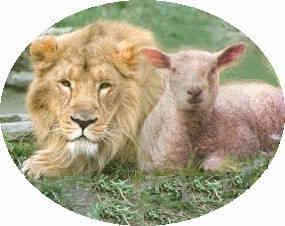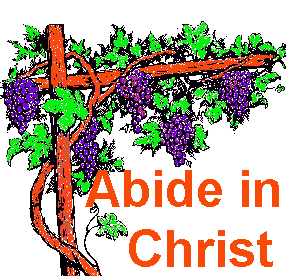You will be my own
treasured possession.
Exodus, comes from the
Greek translation, and means "going out" or "exit."
It tells of Israel going out of Egypt. The title in
Hebrew is Shemoth and comes from the first
words in the Hebrew text meaning "These are the
names."
AUTHOR:
Moses is the stated author of Exodus (Exodus 17:14;
20:25; 24:4-8; 34:27; Josh. 8:31-35) as well as the
first five books of the Law. The rest of the Old
Testament and the New agree with this claim. Jesus
verified the Mosaic authorship (Mk. 12:26). Moses
was vitally connected with all of the events
reported in the last four books of the Torah. Jewish
and Christian tradition hold that Moses was the
writer of these books, with the exception of the
death of Moses in Deuteronomy. Moses was the first
man in history upon whom the power to work miracles
was bestowed.
KEY WORDS:
"Passover," "Redemption"
THEME:
Deliverance of Israel from bondage in Egypt is the
theme. It is an illustration of how God saves His
people. The Exodus was to be a type of our
redemption from sin. The people believed that God
had heard their cry and they worshipped Him.
TIME COVERED:
is about 360 to 430 years.
DATE OF THE EXODUS:
1446 B.C.
TIME BETWEEN GENESIS
AND EXODUS: nearly 300 years.
PURPOSE:
is to show how God’s promise to Abraham (Gen.
15:12-16) was fulfilled when the Lord rescued
Abraham’s descendants from Egyptian bondage. It is
the story of a single family that becomes the chosen
nation (Ex. 2:24; 6:5; 12:37). The number of Hebrews
who went out of Egypt must have numbered from two to
three million.
MIRACLES IN EXODUS:
True miracles offer no obstacle to faith. They are
the acts of God. To believe in a living God and to
believe in miracles are the same thing. They do not
contradict the laws of cause and effect. They are
the effect of the introduction of a new cause.
PLAGUES:
Every plague brought upon Egypt by Moses was a
direct attack upon some deity or religious practice
of the Egyptians. God said to Moses, "Against all
the gods of Egypt I will execute judgment" (Ex.
12:12). Most of the plagues were not unusual
occurrences in Egypt, but were proved to be
supernatural by their intensity, succession and
subjugation to Moses’ command, and by the exemption
of Israel from seven of them. After the second
plague the magicians of Egypt failed to imitate
Moses’ miracles.
1. The water of the Nile
was turned into blood (7:7). Osiris was the god of
the Nile which gave life to Egypt. Now it brought
death to the people.
2. Frogs swarmed on the
land (8:2). Heki, according to Egyptian
superstition, was the god who controlled the frogs.
3. Dust was turned into
lice (8:16). The priests of Egypt were careful to be
free from defilement of insects while worshipping.
The Egyptian priests and the earth god, Seb, were
discredited.
4. Swarms of flies or
beetles, the emblem of Ra, the sun-god was helpless
before Moses and JHVH (8:21). The great fly god
became a plague to them.
5. The cattle became
diseased with murrain (9:3). The sacred Apis Bull,
worshipped all over Egypt as a symbol of strength,
fertility, and prosperity was destroyed.
6. Boils broke out on man
and beast (9:8). The sprinkling of ashes by the
Egyptian priests was supposed to propitiate
Set-Typhon. The opposite took place as Moses
sprinkled the ashes.
7. Hail mingled with fire
(9:18) demonstrated that the gods of the air were
helpless.
8. Locusts (10:4) swarmed
over the land as Serapis the god who was supposed to
protect the land from locus plagues was proved to be
a myth.
9. A thick darkness
covered the land (10:21) as the chief god of Egypt,
Ra, representing the sun, and the moon goddess,
Isis, were proven helpless.
10. Death of the
first-born (11:5) defeated the divine Pharaoh who
had ordered the death of all male Hebrew babies. God
destroyed the heir of the throne. Pharaoh, the
divine ruler, who thought he held life and death in
his own hands was defeated.
THE DRAMA OF
REDEMPTION
Redemption in Exodus can
be defined as the deliverance from the power of an
alien dominion, and enjoyment of the resulting
freedom. It is the book of redemption in the OT.
1. The Lord is the author
of redemption (Ex. 6:1-8). The pronoun "I" appears
18 times in these verses. In Exodus JHVH is the
personal name of the God of the covenant who
personally cares for his people’s welfare. He is
eternally self-existent, yet present with them
wherever they would go, acting on their behalf
(3:12-14; 33:14-16).
2. The reason for
redemption was God’s promise to the forefathers of
the Israelites (2:24; 6:5; Gen. 15:12-16).
3. The motive of
redemption was God’s grace and love (15:13; 20:6;
34:6, 7). The purpose of redemption was that Israel
and the Egyptians might know God (6:7; 7:5; 8:10;
14:18).
4. Redemption in Exodus
is achieved by miracles (4:21), which are a natural
processes controlled supernaturally by God. They are
described as "signs and wonders" (7:3), "great acts
of judgment" (6:6; 7:4), and the "finger of God"
(8:19). Each of the plagues was a direct challenge
to one of the gods of Egypt.
5. The pharaoh was the
villain in redemption, a picture of rebellious
humanity confronted by God’s command (4:21-23). Ten
times the Pharaoh hardened his own heart, and 10
times it was God who hardened it, in effecting the
king’s decision to defy Him.
6. The Passover marked
the purchase of redemption (12:23-27; 15:16). It was
a clear example of salvation by substitution. The
word for "redemption" (6:6; 15:13) means to "act as
a kinsman redeemer" (Lev. 25:25-37; Ruth 3:12, 13).
7. The recipients of
God’s redemption in Exodus were the Israelites. God
took them as His own special people (6:7), and they
were no longer free to do as they pleased (4:22,
23).
8. The demand of
redemption was obedience (20:1-17; 19:8; 24:3;
32:8).
9. The faithful responded
in gratitude with Moses’ "song of redemption" (15;
Rev. 15:3, 4).
Series of studies on
Christ in the Old Testament
Title: Introduction to
Exodus
Series: A Look at the
Book



